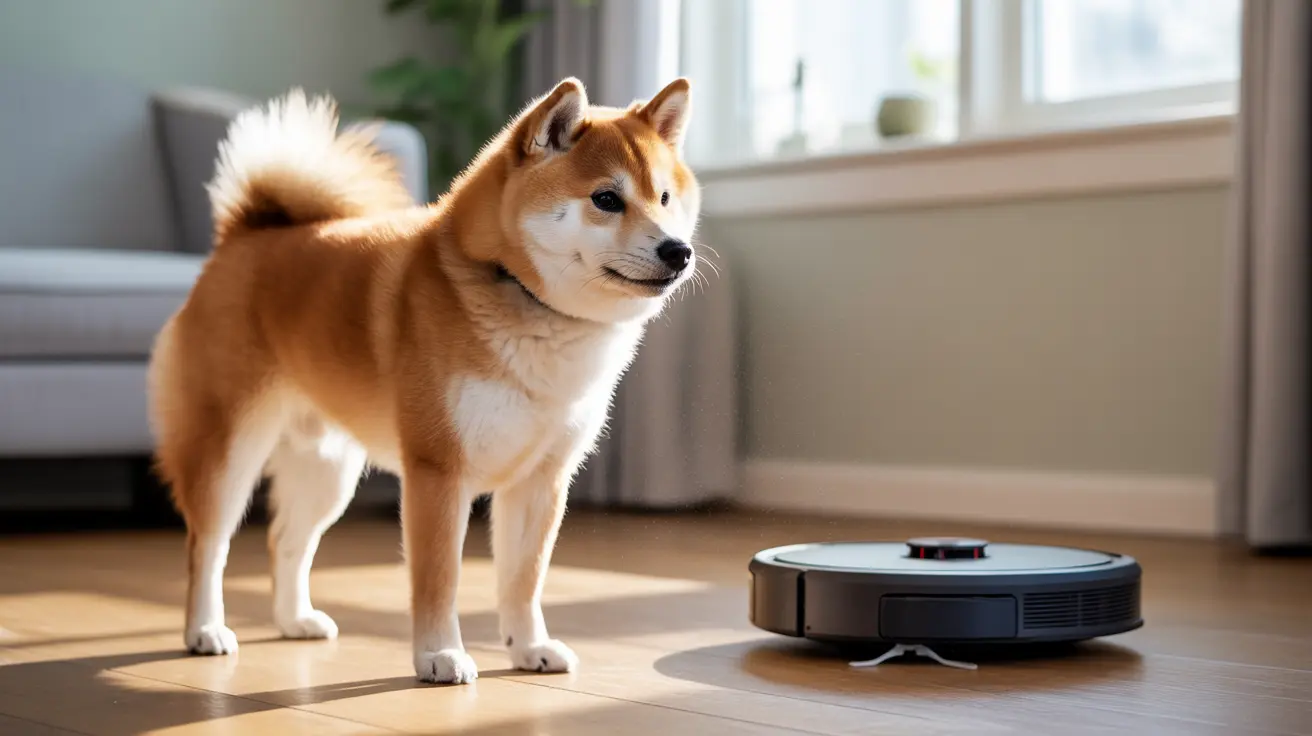For many dog owners, taking out the vacuum cleaner means dealing with a panicked pup who might bark, hide, or even try to attack this seemingly harmless household appliance. Understanding why dogs are afraid of vacuums involves diving into their unique sensory experiences and natural instincts.
Dogs experience the world very differently from humans, particularly when it comes to sounds and smells. Their heightened senses make vacuum cleaners an overwhelming sensory experience that can trigger intense fear responses. Let's explore why our canine companions find vacuum cleaners so frightening and what we can do to help them cope.
The Science Behind Dogs' Vacuum Fear
Dogs have incredibly sensitive hearing capabilities, detecting frequencies between 47,000 to 65,000 Hz – far beyond human hearing that tops out at 20,000 Hz. When a vacuum cleaner runs at approximately 75dB, dogs perceive this noise much more intensely than we do, making it an overwhelming auditory experience.
Beyond sound, dogs' superior sense of smell means they're acutely aware of the dust and particles being disturbed by the vacuum. This creates a double sensory assault that can be particularly distressing for sensitive dogs.
Understanding Your Dog's Fear Response
When faced with a vacuum cleaner, dogs typically exhibit several telling behaviors that indicate fear or anxiety:
- Trembling or shaking
- Hiding under furniture or in other rooms
- Excessive barking or howling
- Displaying submissive postures (tucked tail, flattened ears)
- Panting and drooling
- Pacing nervously
- Showing the whites of their eyes
These reactions stem from their natural fight-or-flight response, triggered by what they perceive as a threatening presence in their environment.
The Role of Past Experiences and Individual Factors
A dog's reaction to vacuum cleaners can be influenced by various factors, including their early life experiences and individual temperament. Rescue dogs or those with limited exposure to household appliances during puppyhood often show more intense fear responses.
Additionally, certain breeds may be more predisposed to noise sensitivity, while others might be naturally more resilient. Previous negative experiences, such as being accidentally bumped by a vacuum, can also create lasting fear associations.
Training Solutions and Management Strategies
Desensitization Techniques
The key to helping dogs overcome their vacuum fear lies in systematic desensitization:
- Start with the vacuum turned off and stationary
- Create positive associations using high-value treats
- Gradually introduce vacuum sounds at low volumes
- Practice with movement before combining sound and motion
- Keep training sessions short and positive
Long-term Management
Some practical strategies for managing vacuum-related anxiety include:
- Establishing a designated "safe zone" for your dog during cleaning
- Using noise-reduction vacuum models when possible
- Maintaining consistent cleaning schedules
- Employing calming aids like pheromone diffusers when needed
Frequently Asked Questions
Why are dogs so afraid of vacuum cleaners even when they are turned off?
Dogs can remain fearful of vacuums even when turned off due to negative associations formed from previous experiences. The vacuum's size, shape, and presence alone can trigger memories of the noise and movement that frightened them before.
How can I help my dog overcome their fear of the vacuum using positive training methods?
Use gradual desensitization and counter-conditioning techniques. Start by placing treats near the stationary vacuum, then slowly progress to treating while moving it unpowered, and finally while running it at increasing volumes. Always respect your dog's comfort level and never force interactions.
What are the most common signs that a dog is scared of a vacuum cleaner?
Common signs include trembling, hiding, excessive barking, tucked tail, flattened ears, panting, drooling, and attempting to flee from the room. Some dogs may also display aggressive behavior like growling or lunging at the vacuum.
Do robotic vacuums frighten dogs as much as regular vacuums, and why?
While robotic vacuums are generally quieter, they can still frighten dogs due to their unpredictable movement patterns and constant presence. However, many dogs adapt to robotic vacuums more easily because of their smaller size and consistent noise level.
Can a dog's fear of vacuums be a sign of a deeper behavioral issue?
While vacuum fear alone isn't usually indicative of deeper issues, it can be part of a broader noise phobia or anxiety disorder. If your dog shows extreme reactions to various sounds or situations, consult with a veterinary behaviorist for proper assessment and treatment.






